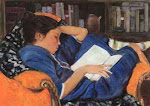 THE PRINCESS AND THE PEA
THE PRINCESS AND THE PEAWritten, illustrated and constructed by Lauren Child
Captured by Polly Borland
Publisher: Puffin Books
(ISBN: 978-0141381381)
EVERYONE knows the story of The Princess and the Pea. It’s a silly, absurd, snobbish story about a wishy-washy prince, his overbred parents and a dimwit of a girl who should have died of pneumonia but, unfortunately, probably married the said prince and bore many unassertive, indecisive, rather idiotic haemophiliac children.
OK, so you’ve guessed that it’s not one of my favourite fairytales. When I was in primary school, this older girl whom I hero-worshipped won a storytelling contest with it and it made me think less of her. Like, couldn’t she have chosen something less dumb? A real princess? Gimme a break! Boy, it really bothered my blossoming socialist sentiments ...
You see, in most versions of the story, there’s never any explanation as to what is meant by “real” princess. The queen and king are simply determined that their precious (paunchy and balding) son should marry a “real” princess. As opposed to a ... social upstart? A divorced princess-by-marriage? A foreign and not-so-real princess? A pop star whose first name happens to be Princess?
Whatever the case, the king and queen just sound totally, typically royal and stuck-up and fuddy-duddy! And their son seems like a spineless chap, happy to go along with their wishes so long as he can hunt and shoot and play billiards till the cows come home.
In the latest version of the fairytale, by Lauren Child, the prince doesn’t argue either, but at least it’s made clear that he doesn’t actually care about whether or not his wife is a real princess. This prince just agrees because he knows he will never get any peace unless he does. Ahhh! A man who knows how to compromise. He is also, writes Child, handsome (but “not too handsome, just handsome enough”), nice and romantic.
And his parents, the king and queen, are more reasonable than they usually are. This royal couple attempts to explain what it means to be a “real” princess. Above all, a “real” princess must have ? not beauty or wealth or status, but ? manners. “‘No one should ever travel without them,’ said the King.”
Oh, is that what being a real princess is all about? Well, that’s all right then.
Another mark of a true princess, according to the king, is that they never read their post (not so terribly well-mannered then).
Child’s princess lives in a tree house, has beautiful black hair and is fond of moonlight. Her home looks enchanting, a hollowed-out tree, with window all lit up and golden, cut in the bark. In her thank you note, Child mentions finding the piece of wood that serves as the princess’s house. The author/illustrator, whose picture books are usually a mixture of drawings and paintings, photographs and collages, goes 3-D in The Princess and the Pea.
Every picture in the book was painstakingly reconstructed using cereal boxes, paint and dollhouse furniture and accessories, some of which she made herself.
The characters are paper dolls, dressed in layers of paper and posed in the 3-D interiors. Each scene was then photographed by Polly Borland. The results are beautiful and awe-inspiring. And if you have always wanted a dollhouse, you will wish doubly hard for one after reading this book.
So I will be sexist and say that Child’s The Princess and the Pea will appeal especially to little girls – because of the dollhouse look of it, because of the paper doll characters; because it’s about a mesmerising princess. However, if you have raised your sons with open, curious minds, they will enjoy it too. My nine-year-old boy does. He thinks it’s jolly funny and insists that the pea must be enchanted since it manages to cause so much pain even through all those mattresses!
As for me, I am converted. From now on, this is the only version of the fairytale I’m allowing on my bookshelf!
P.S. 2nd August 2008 I have just one thing to add. I lent this book to two talented illustrators, both in their very-early 20s and both of them noticed that it's implied in the book that girls who read are boring. I never noticed, but now I do and I think that this is the one flaw of Lauren Child's version of this classic fairytale.

